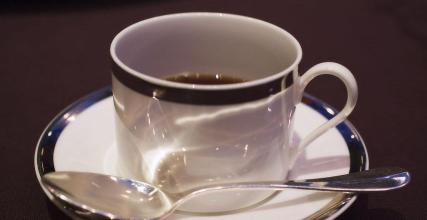Introduction to the Manor of Panamanian Kasha Coffee with its characteristics, flavor and taste
The seeds of Geisha were discovered in 1931 in Ethiopia's rosewood forests and sent to coffee research institutes in Kenya; introduced to Uganda and Tanzania in 1936, Costa Rica in 1953, Panama in the 1970s by Francesco Serrazin of Domba Seven Farm, who distributed seeds from CATIE in Costa Rica and began growing rosewood coffee.
Geisha, carrying the power of a hurricane to sweep the coffee world, this coffee revolution is fierce, so that the coffee kingdom has long occupied the throne of one king and one queen--Jamaica Blue Mountain, Hawaii Kona also have to retreat, this wild variety originally from Ethiopia, after experiencing countless battles, is now valued in all major coffee producing areas, and its best spokesman is from Panama "La Esmeralda" estate.
History of Esmeralda Farm: In 1924, Swedish Hans Elliot founded Esmeralda Farm, which was not a coffee plantation but a pasture. Forty years later, in 1964, Ludwig Peterson's grandfather Ludwig. Mr. Bidsson bought Esmeralda Farm in order to have a place to live in retirement. His grandfather, Mr. Ludlow Bidsson, was born in Sweden and served as President of the Bank of America and Director of the United Nations Development Agency. His son, Mr. Braith Bideson, moved from California to Panama in 1973 to inherit his father's farm. In 1987, most of the farm was converted to coffee cultivation. In 1994, he invested in the purchase of refined coffee machinery in order to establish a brand. Mr. Braith Bideson and his wife Susan raised three children, Eligu, while the coffee farm was officially operated.(born in Philadelphia, 1966), Richelieu (born in Sweden, 1967), Daniele (born in Panama, 1974).
In 1996 Braith and Rachel visited a farm for sale in the Haramijon area of the Boketty Valley and were attracted by the beauty of the farm and immediately bought it. This is Esmeralda. Harami Jonon Farm, third son Danielle. Mr. Bidesson planted the coffee world's attention on this farm-Geisha coffee!
Geisha, pronounced geisha in Japanese, is also known as geisha coffee; because the tree is taller than ordinary coffee trees, it was originally planted in a small area of the estate and used as a windbreak. The son of the owner of the estate, in order to participate in the annual Panama Best Coffee Competition, searched all the coffee trees in the estate to do the test, so that Geisha had the opportunity to make an appearance. After that, he also participated in various world coffee competitions and won a total of eleven championships. Rose Summer Coffee beans have a very beautiful blue-green color, jade-like warm texture, smell of fresh grass, peach flavor, berry flavor and milk sweet flavor unique to oolong tea that most coffee beans do not have. It seems that aroma and taste need to be associated with each other, but the faint tea flavor is something we can obviously feel [1].
In order to highlight the characteristics and aroma of this bean, the roasting degree is close to two explosions, close to two explosions and two explosions are more commonly used roasting degrees, so that the characteristics of the bean itself can be brought into play. Too shallow will give off miscellaneous flavor, too deep will lose flower aroma and fruit acid, of course, this should also be adjusted according to the characteristics of the coffee bean and the understanding of the roaster for the bean itself.
Rose summer coffee ripe beans
Rose summer coffee ripe beans
Roasted ripe beans, it seems that there will be some "folds", there are "sexy folds" beans are to highlight its original flavor and fruit acid, but if the quality of the raw beans themselves is not high will give some miscellaneous flavor, such as rotten soil flavor, grass flavor and dry flavor, these flavors are baked should try to avoid, baked rose summer has charming lemon citrus aroma and super sweet honey cream flavor.
Flavor Editor
Floral, tropical fruit, intense sweetness; these are the feelings that rose summer has always brought us. Properly baked, they make you feel like sipping the fragrance of a bouquet of flowers. In case you haven't heard the story about Rosedale, it was originally an ancient native species from Ethiopia that was brought as a coffee sample into Costa Rica's coffee experimental plantations and distributed to several small farms for small-scale trial cultivation.

Important Notice :
前街咖啡 FrontStreet Coffee has moved to new addredd:
FrontStreet Coffee Address: 315,Donghua East Road,GuangZhou
Tel:020 38364473
- Prev

Introduction to the characteristics of Coffee Variety of Coffee Manor in Xidamo Shachiso producing area
Ethiopia is the birthplace of coffee. Ethiopian coffee has the same deep cultural accumulation as Chinese tea. The Sidamo producing area, which is 1400-2200 meters above sea level, is a famous boutique coffee area in southern Ethiopia, bordering Kenya. The washed Sidamo is light green, the beans are small, the growth is oval, the fruit is full, the average quality is good, the smell is aromatic and mellow, one drop.
- Next

What kind of coffee does Jamaican coffee produce? how does it taste?
The secret of why Blue Mountain coffee tastes pure: their coffee trees are all grown on rugged hillsides, and the picking process is so difficult that non-local skilled female workers are simply unable to do it. It is very important to choose the right ripe coffee beans when picking. Immaturity or ripeness will affect the quality of the coffee. The picked coffee beans are shelled on the same day, and then let them ferment for 1218 hours.
Related
- Detailed explanation of Jadeite planting Land in Panamanian Jadeite Manor introduction to the grading system of Jadeite competitive bidding, Red bid, Green bid and Rose Summer
- Story of Coffee planting in Brenka region of Costa Rica Stonehenge Manor anaerobic heavy honey treatment of flavor mouth
- What's on the barrel of Blue Mountain Coffee beans?
- Can American coffee also pull flowers? How to use hot American style to pull out a good-looking pattern?
- Can you make a cold extract with coffee beans? What is the right proportion for cold-extracted coffee formula?
- Indonesian PWN Gold Mandrine Coffee Origin Features Flavor How to Chong? Mandolin coffee is American.
- A brief introduction to the flavor characteristics of Brazilian yellow bourbon coffee beans
- What is the effect of different water quality on the flavor of cold-extracted coffee? What kind of water is best for brewing coffee?
- Why do you think of Rose Summer whenever you mention Panamanian coffee?
- Introduction to the characteristics of authentic blue mountain coffee bean producing areas? What is the CIB Coffee Authority in Jamaica?

